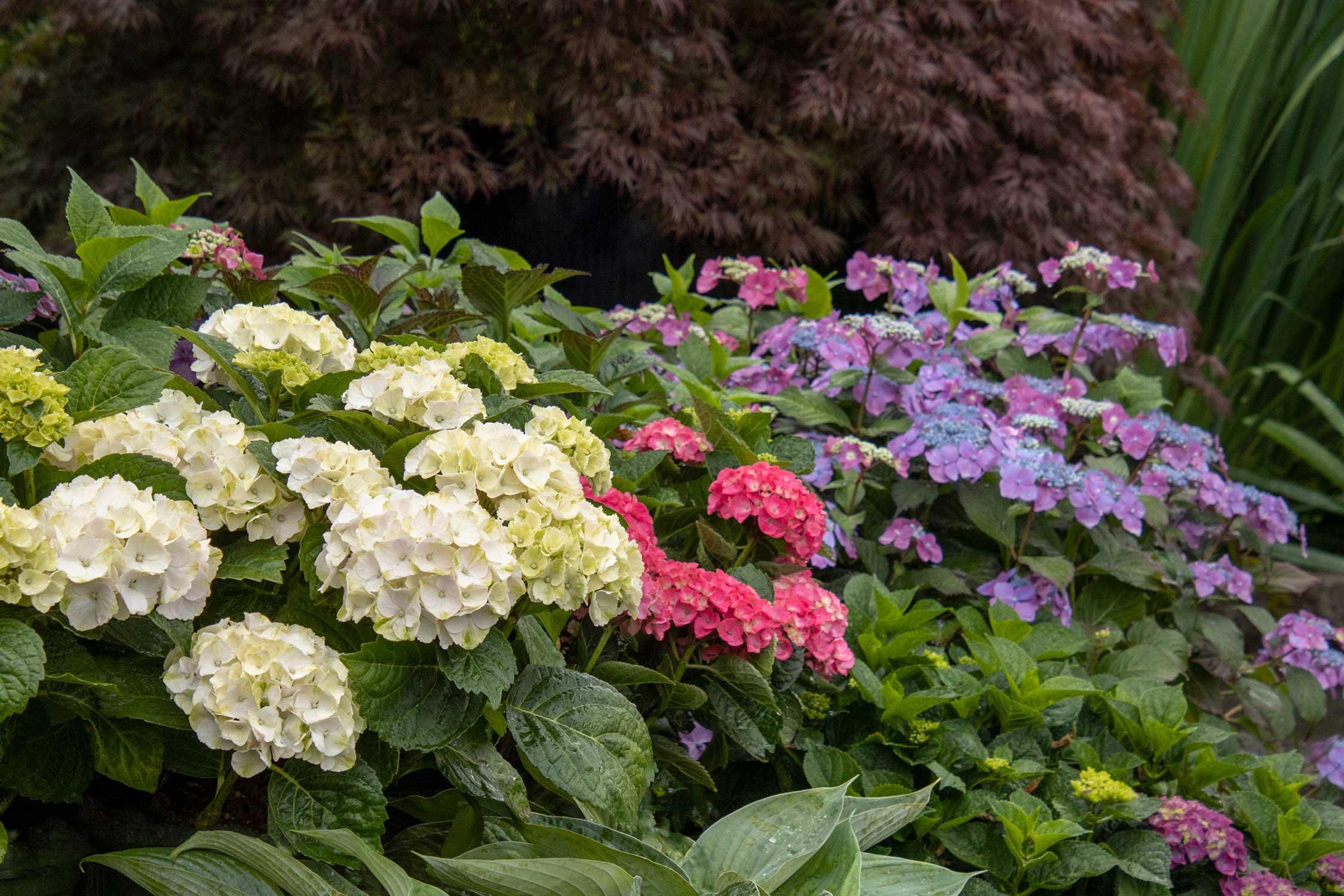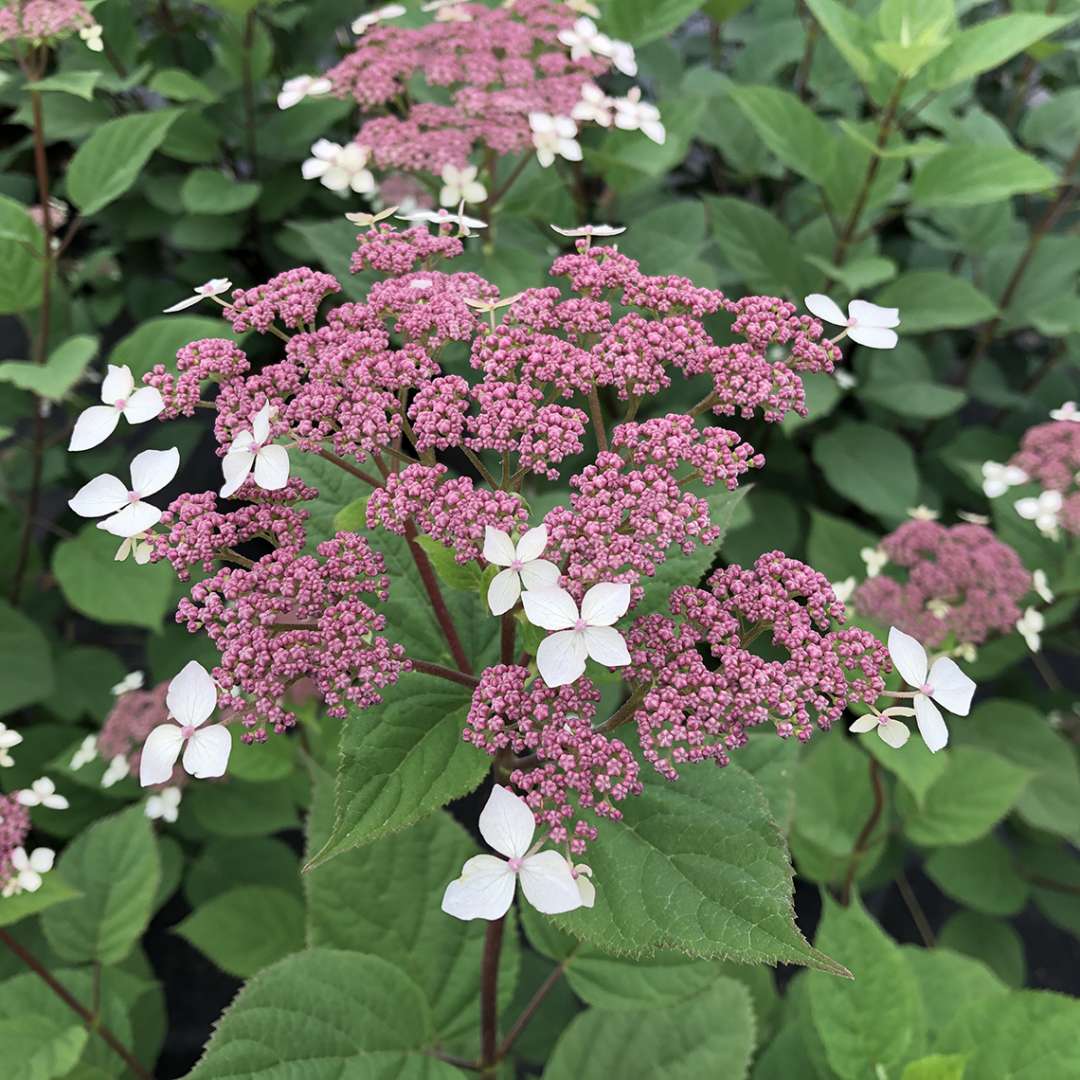Lacy Hydrangeas: The Perfect Flower For Your Summer Garden
Lacy Hydrangeas: The Perfect Flower for Your Summer Garden
Hydrangeas are a popular choice for summer gardens, and for good reason. They come in a wide variety of colors, sizes, and shapes, and they can add a touch of elegance to any landscape. But if you're looking for a hydrangea that is truly unique, then you need to consider lacy hydrangeas.
Lacy hydrangeas (Hydrangea paniculata) are a type of hydrangea that is known for its delicate, lace-like flowers. They typically grow 3-6 feet tall and wide, and they produce large, conical flower clusters that can reach up to 12 inches in length. The flowers start out white or pale green, and they gradually turn pink or purple as they mature. Lacy hydrangeas bloom from midsummer to fall, and they are a magnet for butterflies and other pollinators.
In addition to their beautiful flowers, lacy hydrangeas are also relatively easy to care for. They prefer full sun to partial shade, and they need moist, well-drained soil. Lacy hydrangeas are also relatively cold-hardy, and they can tolerate temperatures down to -20 degrees Fahrenheit.
If you're looking for a beautiful and easy-care hydrangea for your summer garden, then lacy hydrangeas are a great option. They're sure to add a touch of elegance to your landscape and provide you with months of enjoyment.
Here are some additional insights and updates about lacy hydrangeas:
- Lacy hydrangeas are native to East Asia, and they are now grown in gardens all over the world.
- There are many different varieties of lacy hydrangeas, each with its own unique flower color and shape.
- Lacy hydrangeas can be grown in containers or in the ground.
- They are relatively drought-tolerant once established, but they do need regular watering during the first year after planting.
- Lacy hydrangeas can be pruned in late winter or early spring.
- They are susceptible to a number of pests and diseases, but they are generally easy to care for.
If you're thinking about adding lacy hydrangeas to your garden, here are a few tips:
- Choose a location that gets full sun to partial shade.
- Amend the soil with compost or other organic matter before planting.
- Water regularly, especially during the first year after planting.
- Fertilize in spring with a balanced fertilizer.
- Prune in late winter or early spring.
- Protect from pests and diseases.
With a little care and attention, lacy hydrangeas will reward you with years of beautiful blooms.
Lacecap hydrangeas are a beautiful and versatile addition to any garden. With their delicate flowers and lush foliage, they can add a touch of elegance to any landscape. If you're thinking about adding lacecap hydrangeas to your garden, I encourage you to visit . This website has a wealth of information about lacecap hydrangeas, including:
- Different types of lacecap hydrangeas
- How to choose the right lacecap hydrangea for your garden
- How to plant and care for lacecap hydrangeas
- How to propagate lacecap hydrangeas
- How to prevent and treat common lacecap hydrangea problems
I also like that offers a variety of resources, such as articles, videos, and plant profiles. This makes it easy to find the information you need, no matter what your level of experience is.
So if you're ready to learn more about lacecap hydrangeas, I encourage you to visit . You won't be disappointed!
FAQ of lacy hydrangeas
- What are lacy hydrangeas?
Lacy hydrangeas are a type of hydrangea that is known for its delicate, lace-like flowers. They are native to Japan and Korea, and are grown in USDA hardiness zones 4-9. Lacy hydrangeas typically grow 3-6 feet tall and wide, and bloom in mid-summer to early fall. The flowers can be white, pink, or blue, depending on the soil pH.
- How do I care for lacy hydrangeas?
Lacy hydrangeas are relatively easy to care for. They prefer full sun to partial shade, and moist, well-drained soil. They should be watered regularly, especially during the hot summer months. Lacy hydrangeas do not need to be fertilized often, but a light application of fertilizer in the spring can help promote flowering.
- How do I deadhead lacy hydrangeas?
Deadheading lacy hydrangeas is important to encourage new blooms. To deadhead, simply remove the spent flowers from the plant. You can do this by hand or with a pair of scissors. Deadheading can be done anytime, but it is best to do it in the early spring or fall.
- Why are my lacy hydrangeas not blooming?
There are a few reasons why your lacy hydrangeas might not be blooming. One possibility is that the plant is not getting enough sunlight. Lacy hydrangeas need at least 6 hours of sunlight per day to bloom properly. Another possibility is that the plant is not getting enough water. Lacy hydrangeas need to be watered regularly, especially during the hot summer months. Finally, the plant may not be getting enough fertilizer. A light application of fertilizer in the spring can help promote flowering.
- What are some pests and diseases that can affect lacy hydrangeas?
Lacy hydrangeas are susceptible to a few pests and diseases. Some common pests include aphids, spider mites, and scale insects. These pests can be controlled with insecticidal soap or neem oil. Some common diseases that can affect lacy hydrangeas include powdery mildew, leaf spot, and root rot. These diseases can be prevented by providing good cultural conditions, such as adequate sunlight, water, and fertilizer.
Image of lacy hydrangeas
- Lacy hydrangeas in a garden. This image shows a white lacy hydrangea bush in full bloom in a garden. The flowers are delicate and airy, with a soft, lacy appearance. The bush is surrounded by other flowers and greenery, creating a lush and inviting scene.

- Lacy hydrangeas in a vase. This image shows a bouquet of white lacy hydrangeas in a vase. The flowers are arranged in a loose, cascading style, and their delicate petals are beautifully highlighted against the dark green leaves of the vase.
- Lacy hydrangeas in a forest. This image shows a white lacy hydrangea bush growing in a forest. The flowers are surrounded by lush greenery, and their delicate petals are fluttering in the breeze. The scene is both peaceful and serene.

- Lacy hydrangeas against a blue sky. This image shows a white lacy hydrangea bush in full bloom against a blue sky. The flowers are delicate and airy, and their soft, lacy appearance is highlighted against the bright blue sky.
- Lacy hydrangeas in a meadow. This image shows a white lacy hydrangea bush in full bloom in a meadow. The flowers are surrounded by tall grasses and wildflowers, and their delicate petals are fluttering in the breeze. The scene is both peaceful and bucolic.

Post a Comment for "Lacy Hydrangeas: The Perfect Flower For Your Summer Garden"